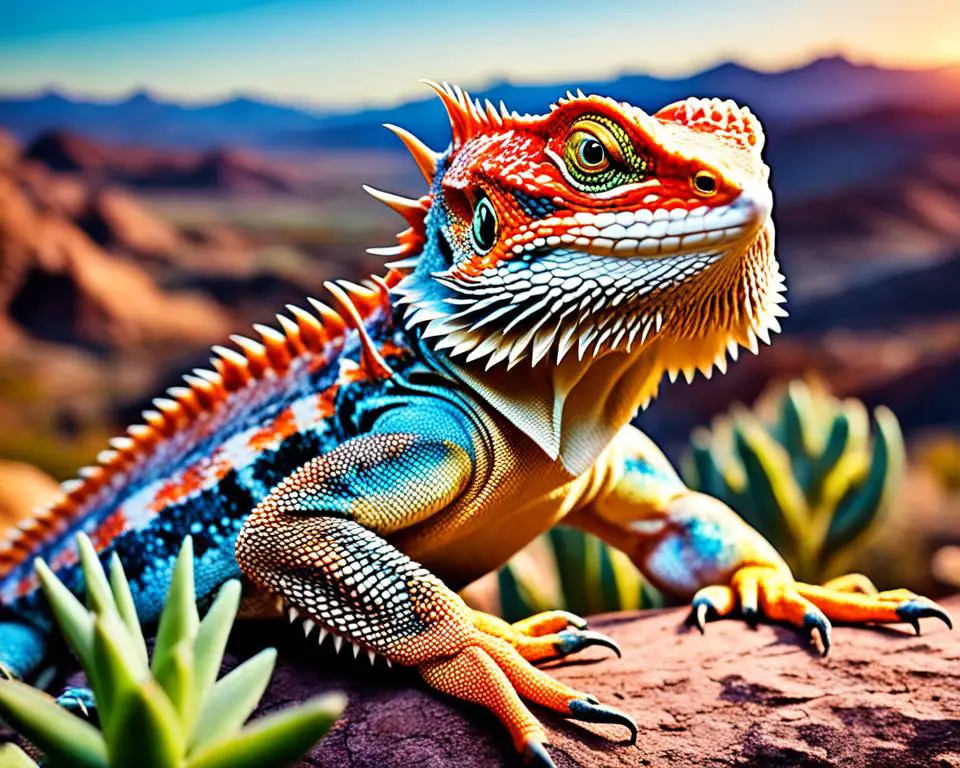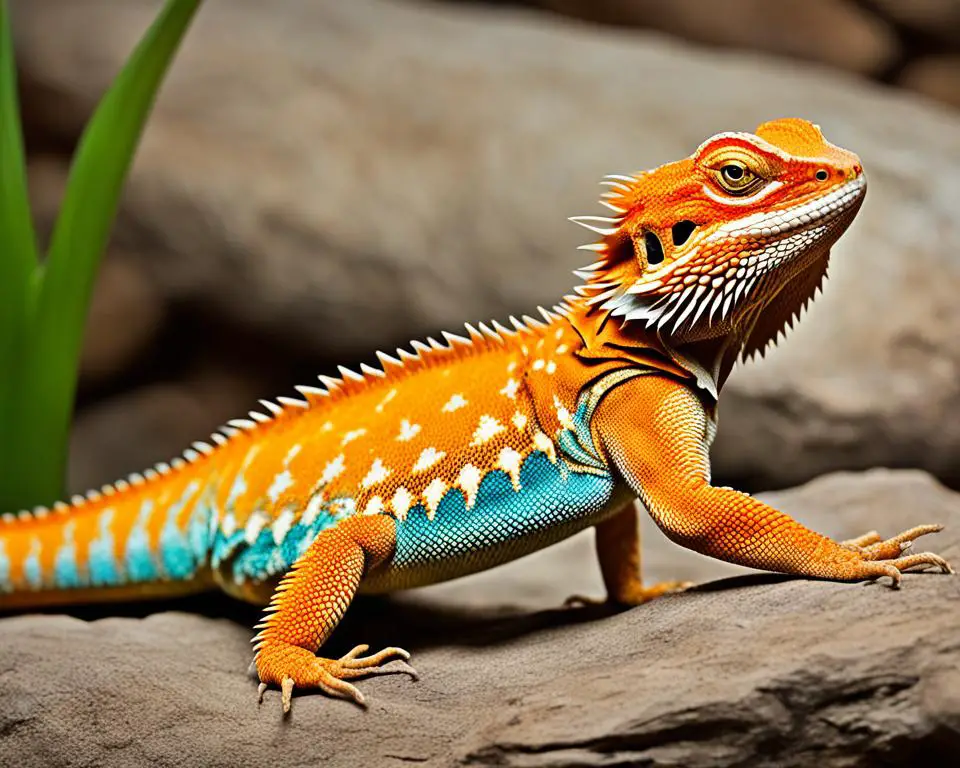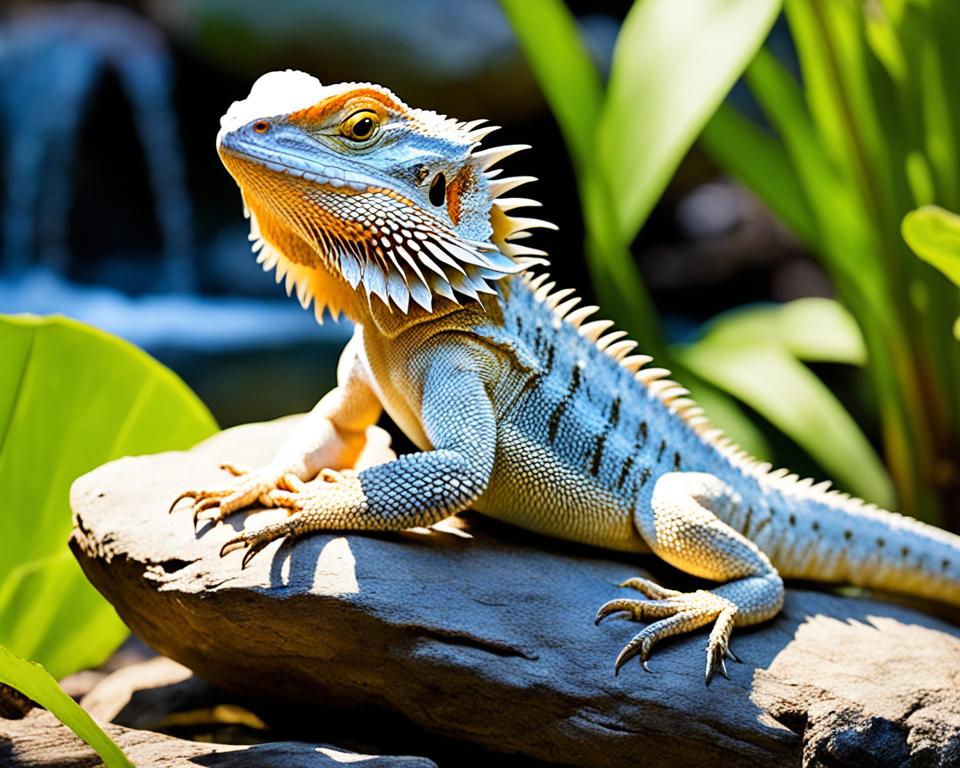Bearded dragons are popular pet lizards that make excellent companions. Unfortunately, they can deliver a painful bite if they feel threatened.
In this article, we’ll explore the pain level of a bearded dragon bite and provide tips for preventing them in the future.
Do bearded dragons bite?
Bearded dragons can bite, but they are generally not aggressive creatures. These reptiles are known for their calm and docile nature, especially when they are properly handled and cared for.
However, like any animal, bearded dragons might bite if they feel threatened, scared, or stressed. Their bites typically do not cause serious harm but can be surprising and a little painful.
It’s important to handle bearded dragons gently and to respect their space. Learning to read their body language can also help in avoiding situations where they might feel the need to bite.
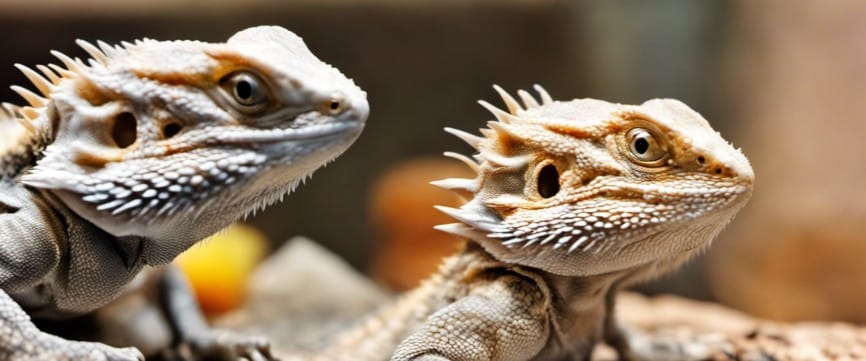
Here are some key things to know about bearded dragon bites:
- Bearded dragons have small teeth that aren’t very sharp. Their bites are unlikely to break skin for most adults.
- Bites usually only happen if the dragon feels threatened or stressed. Proper handling and gaining their trust can prevent bites.
- Young or untamed dragons are more likely to nip or bite than calm adult dragons. It’s usually just their way of saying they’re scared or don’t want to be bothered.
- Signs like puffing up the beard, headbobbing, or tail whipping are warnings that they may bite if handling isn’t stopped.
- Bites can startle but usually don’t hurt much – most compare it to a pinch. But it’s still important to respect their body language.
- Dragons won’t bite out of aggression. Only for defense if they feel unsafe in a new situation or from an unfamiliar person.
- Proper socialization and handling from a young age helps them get used to people, so biting is less likely.
So, in summary, while bearded dragons can nip, it’s generally avoidable with patience and gaining their trust.
Read also: Can Bearded Dragons Eat Lavender? (Explained)
Do bearded dragons bite often?
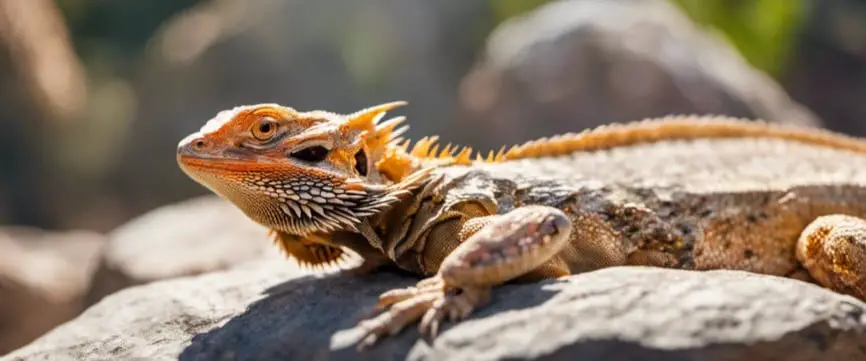
In general, bearded dragons are not aggressive reptiles and don’t bite often. They are usually docile towards their human caregivers and other pets in the household.
However, like any animal, bearded dragons can have their less-than-perfect days when they might be more prone to biting due to factors like stress, illness, or improper care.
It’s essential to understand the individual temperament of our bearded dragons and monitor their behavior for warning signs.
Warning signs of a potential bite
There are several warning signs that our bearded dragon might be feeling stressed or threatened and could resort to biting.
The most common sign is the puffing of their ‘beard,’ the area under the chin that turns black when they feel threatened.
Another indicator is their body language, such as an open mouth, aggressive head-bobbing, or quick movements. If we notice any of these signs, it’s best to give them some space and avoid handling them until they’ve calmed down.
It’s essential to regularly monitor our bearded dragon’s behavior, observe their body language, and create a comfortable environment to reduce stress.
The physical aspect of bearded dragon bites
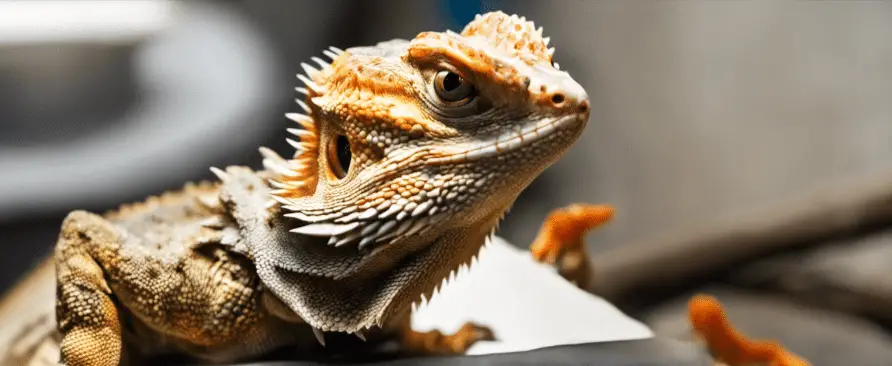
Many new bearded dragon owners have reported that their bites are very painful.
Bearded dragons have sharp claws and powerful jaws that can cause a lot of pain when they bite. Let’s analyze why you should not underestimate a bearded dragon bite.
Bearded dragon teeth and jaw
Bearded dragons have a unique set of teeth that are designed to help them eat a variety of food, including insects and vegetation.
Their teeth are small, cone-shaped, and sharp, allowing them to easily grip and tear their food. Their jaw is also quite strong, giving them the ability to crush and break down their food effectively.
Despite their seemingly fearsome appearance, bearded dragons are not known to be aggressive creatures. However, their bite can still be quite painful if it occurs.
Does a bearded dragon bite hurt?
When it comes to the pain of a bearded dragon bite, it largely depends on the size and age of the dragon, as well as the location and force of the bite.
Generally speaking, the bites from adult bearded dragons are more painful than those of juveniles.
Given their sharp teeth and strong jaws, a bearded dragon bite can cause discomfort, with some people describing the pain as a pinching or stinging sensation. However, bearded dragon bites are not venomous, so they are not dangerous in that sense.
Resulting wound from a bite
If a bearded dragon bites and it is hard enough to break the skin, it can potentially cause a small puncture wound or laceration.
The extent of the injury will depend on the force of the bite and the location of your body. In some cases, the bite may result in bleeding or draw blood, which will need proper care and attention to prevent infection.
If the bite does cause injury, it is important to clean the wound thoroughly with soap and water, apply an antibiotic ointment, and cover it with a bandage to promote healing.
What do you do if a bearded dragon bites you?
If a bearded dragon bites you, follow these steps to ensure proper care and minimize any potential complications:
- Stay Calm. Avoid jerking your hand away, as this could harm the bearded dragon or worsen the bite wound.
- Gently Detach the Lizard. If the bearded dragon does not let go immediately, gently pry its mouth open or wait for it to release on its own. Do not shake or pull it off aggressively.
- Clean the Wound. Rinse the bite area with warm, soapy water. This helps to remove any bacteria and reduces the risk of infection.
- Cover the Wound. If necessary, use a sterile bandage to cover the wound, especially if it’s bleeding.
- Consult a doctor: Make sure to consult a doctor even if you think it may be just a scratch; better be safe than sorry.
- Review Handling Techniques. Reflect on the circumstances of the bite. It might be a sign that the bearded dragon was handled improperly or was feeling stressed. Learning proper handling techniques and understanding the behavior of bearded dragons can prevent future bites.
- Observe Your Bearded Dragon. Watch for any changes in the behavior or health of your bearded dragon after the incident, as it could be a sign of stress or injury.
Remember, bearded dragon bites are often a response to fear or discomfort. Handling your pet gently and respectfully can help build trust and reduce the likelihood of biting incidents.
Aggression and temperament in bearded dragons
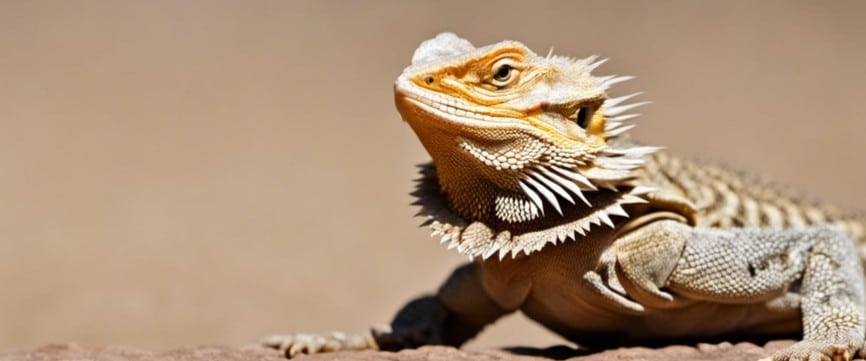
When it comes to aggression and temperament in bearded dragons, it is important to understand that they are generally docile creatures and do not typically display signs of aggression.
However, like any other animal, bearded dragons can feel threatened or stressed out and may react by biting if they feel cornered or provoked.
Handling and socializing bearded dragons
Bearded dragons are generally calm and easy-going reptiles, making them popular pets for reptile enthusiasts. However, proper handling and socialization are crucial to maintain their good temperament.
When we acquire a bearded dragon, especially a juvenile or rescue, it is essential to give them time to adjust to their new environment before attempting to handle them. This allows the dragon to become comfortable in their surroundings and reduces stress.
In the initial stages of handling, we must be gentle and patient to gain their trust. Approaching them slowly and holding them confidently can help to establish a positive bond.
It is equally important to offer our bearded dragons regular interaction to maintain their socialization. Over time, this will ensure they remain comfortable and relaxed around humans.
During certain periods, such as brumation, bearded dragons may display changes in temperament.
Brumation is a hibernation-like state in which the dragons spend more time resting and may exhibit signs of discomfort.
It is essential to be aware of these periods and understand that the dragon’s temperament could be affected during this time.
Signs of aggression in bearded dragons
Despite their generally good nature, bearded dragons may, on occasion, signal aggression or stress.
Some of these warning signs include hissing, black beard, bobbing the head, and puffing up the beard.
It is crucial to recognize these signs and address any potential triggers, such as bright lights, reflections, or the presence of other pets and children.
In some situations, a bearded dragon may become aggressive due to improper handling or insufficient socialization.
If this occurs, it is crucial to reassess our approach and ensure we are following the correct handling techniques.
Pro tip: If you notice your bearded dragon’s tail becoming stiff or larger, it may indicate that they are stressed and require more time to relax.
In conclusion, maintaining the well-being of our bearded dragons involves understanding their temperament and recognizing any signs of aggression or stress.
How to respond to a bearded dragon bite
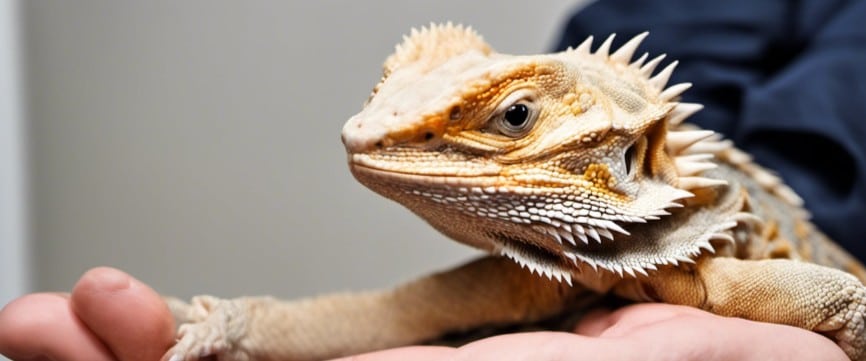
Let’s assume you have been bitten by a bearded dragon. If this is the case, it is important to remain calm and avoid startling them further. Secure your bearded dragon in a safe area and remove yourself from the situation.
Consulting a doctor
While bearded dragon bites are rarely dangerous, it may be necessary to consult a doctor in certain situations.
If the wound becomes infected, shows signs of worsening, or if you have experienced an allergic reaction, seeking medical assistance is essential. It is better to be cautious and ensure that no complications arise from the bite.
Preventing future bites
Bearded dragons are generally docile animals, but there are measures that we can take to avoid getting bitten:
- Handle bearded dragons carefully and with respect to avoid mishandling or hurting them.
- Do not provoke the lizard by making sudden or threatening movements.
- Slowly acclimatizing the bearded dragon to human interaction can help them feel more comfortable and less likely to bite.
- Ensure that the lizard is well-fed, as hunger can be a cause for biting.
Feeding issues leading to bearded dragon bites
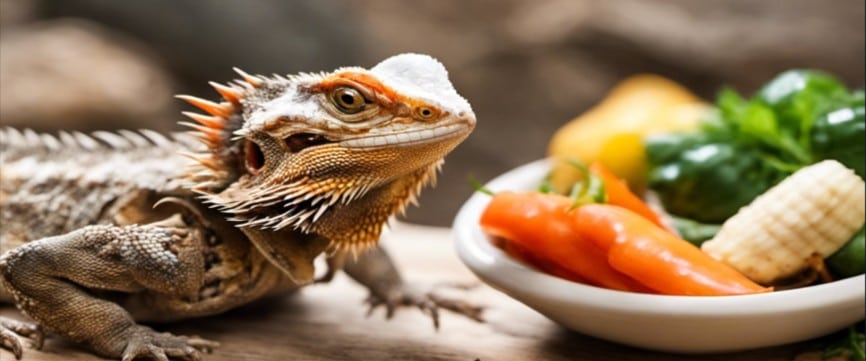
This scenario is probably the most common when it comes to bearded dragon bites. Hungry dragons may bite humans or other animals in an attempt to grab the food.
Recognizing hunger in bearded dragons
Hunger is a common reason for bearded dragon bites. It is crucial for us to recognize the signs of a hungry bearded dragon to prevent potential bites.
They may show increased activity and restlessness or glass-surfing. When hungry, these reptiles can also exhibit a more aggressive behavior towards their tank mates or even us, their human owners.
To avoid bites from a hungry bearded dragon, it is important to maintain a regular feeding schedule and provide them with a well-balanced diet that addresses their nutritional needs.
Hand-feeding bearded dragons
Hand-feeding is another potential cause of bearded dragon bites. When we feed bearded dragons using our hands, it is possible for them to mistake our fingers for food.
This usually happens when they are very hungry or overexcited during feeding times. To reduce the risk of bites during hand-feeding, we can take various precautions:
- Use tweezers or feeding tongs to offer insects and other live prey to our beardies.
- Make sure to wash our hands before and after feeding to avoid strong food odors.
- Stay calm and move slowly while hand-feeding to avoid startling our bearded dragons.
Feeding time mishaps
Feeding time mishaps are another contributing factor to bearded dragon bites. If multiple lizards or other animals are present in our home, it is essential to introduce them slowly and carefully.
Bearded dragons can become territorial and may bite each other or our hands if they feel threatened during feeding time. We can minimize feeding time bites by:
- Feeding our bearded dragons separately to reduce competition and aggression.
- Ensuring that the enclosure is large enough to accommodate the beardies comfortably and securely.
- Using barriers or separate spaces to prevent visual contact between our bearded dragons during feeding.
Behavioral patterns related to biting
Sometimes, the underlying cause of bearded dragon bites can be behavioral. If our beardies are feeling anxious or threatened, they may bite us to defend themselves.
Let’s take a look at some of the common behavioral issues that can cause bearded dragon bites.
Mating and dominance behavior
Bearded dragons express a variety of behaviors during mating and dominance displays. Male bearded dragons may become more aggressive in the presence of females or other males as they compete for territory.
They might puff up their beard, open their mouth wide, or even bite other dragons, especially on the female’s neck during mating.
How bearded dragons express discomfort
Bearded dragons can become uncomfortable for several reasons, causing them to display various signs indicating their discomfort.
When they feel scared or threatened, they might puff up their beard and open their mouth wide. If they’re in pain or are being handled improperly, they may attempt to back away or even bite as a defense mechanism.
Recognizing these signs of discomfort can help us adapt our handling techniques and ensure a safe environment for our bearded dragons.
Special considerations for juvenile and baby bearded dragons
Juvenile and baby bearded dragons may have different behavioral patterns than their adult counterparts.
These younger dragons may be more susceptible to stress and changes in their environment, such as shedding, new enclosures, or being handled by children.
As a result, they may become overexcited or scared, leading to defensive biting behaviors. It is essential to monitor their behavior closely and make necessary adjustments to promote their well-being and minimize biting incidents.
Summary
Before we move on to the conclusion, we’ve summarized this article into a short list of key points for you to remember:
- Bearded dragons are friendly but can bite if they feel threatened, hungry, or uncomfortable.
- Signs of aggression include puffing up their beard, open mouth, or quick movements.
- A bearded dragon bite can be painful, but it’s not venomous.
- To prevent bites, handle bearded dragons carefully, avoid provoking them, and feed them well.
- Bearded dragons may bite during mating or when they feel uncomfortable or stressed.
- Juvenile and baby bearded dragons may have different behavioral patterns.
Conclusion
Bearded dragon bites can be painful and even dangerous, so it is important to take steps to prevent them.
Proper diet and feeding techniques, careful introductions to new environments, and recognizing signs of discomfort will all help reduce the risk of bites.
So, if you decide to keep a bearded dragon as a pet, make sure to be mindful of their needs and take proper precautions to reduce the risk of bites.
Want to learn more about bearded dragons?
Ready to boost your knowledge to the next level? If so, check out the articles below:
- 9 Ways How to Tell If a Bearded Dragon is Scared (Solved)
- What Bugs Can a Bearded Dragon Eat? ( 7 Must-Have Bugs)
- How Many Crickets Should a Bearded Baby Dragon Eat? (Explained)



